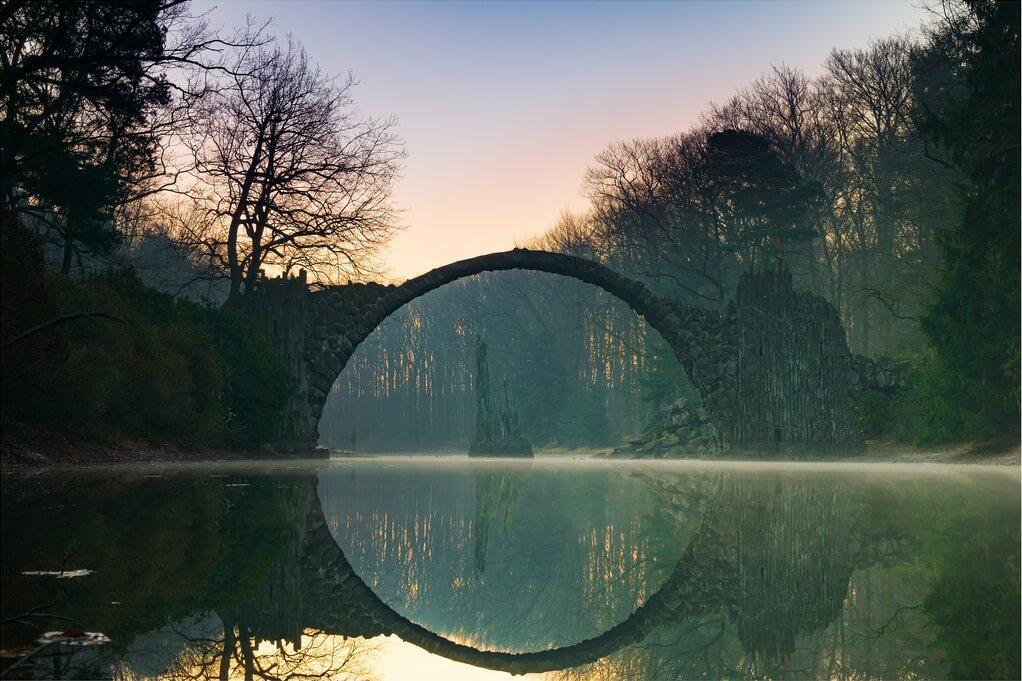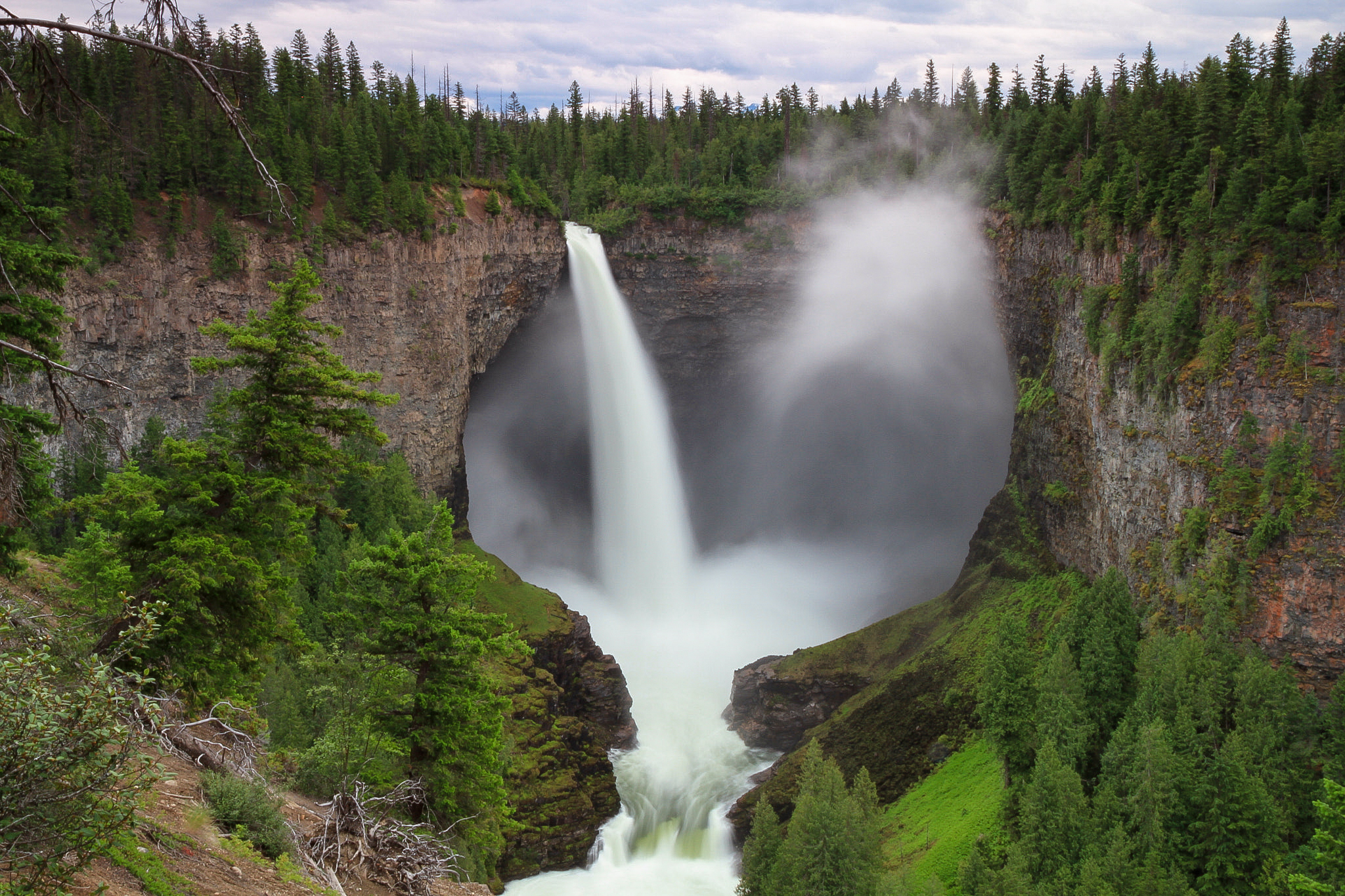Have you ever admired beautiful and intricate architectural bridges built by humans? But did you know that nature also has equally impressive and unique works of art? These are natural and majestic bridges formed from natural materials such as rocks, wood, plants, ice, or moss. These bridges not only enhance the landscape with richness and enchantment but also hold valuable tourism, cultural, historical, and scientific significance. In this article, we will take you on a journey to explore the most magnificent natural bridges in the world, along with useful information and interesting suggestions for you to experience them. Join us in discovering these natural wonders!
What are grand and natural bridges?
Grand and natural bridges are natural landforms that take the shape of an arch with an opening underneath. They typically form on coastal cliffs, riverbanks, or in deserts due to erosion caused by water, wind, or weather.
Grand and natural bridges can be classified based on various criteria, such as their origin, materials, shape, size, or location. Some common types of natural and majestic bridges include:
- Coastal natural bridges: These bridges form due to the erosion of waves against promontories or small islands. Examples include the Rainbow Bridge in the United States and the now-collapsed Azure Window in Malta (in 2017).
- Riverbank natural bridges: These bridges form due to the erosion caused by flowing currents against rock cliffs or riverbanks. Examples include Fairy Bridge in China and Rakotzbrücke in Germany.
- Desert natural bridges: These bridges form due to the erosion caused by wind or weather against rock formations or walls. Examples include Landscape Arch in the United States and Tassili n’Ajjer in Algeria.
- Ice natural bridges: These bridges form due to the freezing of water or snow into cracks or caves. Examples include Perito Moreno in Argentina and Helmcken Falls in Canada.
Explore the world's most grand and natural bridges :
1. The Rainbow Natural Bridge in the United States
The Rainbow Natural Bridge is one of the tallest natural bridges in the world, standing at 88 meters in height and spanning 84 meters in length. The bridge is composed of Navajo sandstone, originating from sand dunes formed during the Late Triassic and Early Jurassic periods. It is protected within the Glen Canyon National Recreation Area, located in the state of Utah, United States.
The Rainbow Natural Bridge holds great cultural significance for the Navajo culture, one of the Native American tribes indigenous to the United States. The Navajo people consider the bridge to be a sacred embodiment of the deities responsible for creating rain, the life source of the desert. Before the construction of the Glen Canyon Dam and the creation of Lake Powell, the Rainbow Natural Bridge was a remote destination that required several days of hiking from the Navajo Mountains.
Today, to reach the Rainbow Natural Bridge, there are two options: you can take a boat ride on Lake Powell from the marinas near Page, Arizona, and then hike approximately 1.6 kilometers from the National Park Service boat dock at the Bridge Canyon; or you can hike from a starting point south of Lake Powell (permission is required from the Navajo Nation at Window Rock, Arizona).
When you arrive at the Rainbow Natural Bridge, you will witness a stunning and majestic natural wonder, with its graceful, arched form resembling a rainbow in the sky. You will also feel the sacred and spiritual significance the bridge holds for the Navajo people and other Native American tribes. Please respect and protect the bridge when you visit, refraining from leaving any traces or touching it. You can also learn more about the history, culture, and scientific aspects of the bridge through informational signs or guides available on-site.
2. The Fairy Natural Bridge in China

The Fairy Natural Bridge (仙人桥, Xiānrén Qiáo) is a natural bridge formed by the erosion of the Buliu River against karst limestone rocks. It is located in Guangxi Province, southern China, approximately 40 kilometers northwest of the town of Fengshan. With a length of 90 meters, the Fairy Natural Bridge is recognized as the world's longest recorded natural bridge.
The Fairy Natural Bridge is a rare and breathtaking natural wonder, with its gracefully arched form resembling a rainbow over the turquoise river. It is also a cultural icon for the local people, considered a sacred and mystical place.
To reach the Fairy Natural Bridge, you can choose to take a boat ride on the Buliu River from the village of Buliu, which takes about three hours. Along the way, you will be able to admire the magnificent and untouched natural landscapes of the area, with towering mountains, caves, and waterfalls. You will also encounter some small and large rapids, adding excitement and thrills to the journey.
When you arrive at the Fairy Natural Bridge, you will be amazed by the beauty of the bridge, with rays of sunlight shining through the openings, creating shimmering rainbows. You can also walk beneath the bridge to experience its grandeur and elegance. Please respect and protect the bridge when you visit, refraining from littering or touching it. You can also learn more about the history, culture, and scientific aspects of the bridge through informational signs or guides available on-site.
3. The Rakotzbrücke Natural Bridge in Germany
The Rakotzbrücke Natural Bridge (Rakotzbrücke in German) is bridge built in 1860 by a local knight, located in Kromlau Park in the state of Saxony, Germany. The bridge takes the form of a small arch and is constructed using various local stones. The bridge's two ends are adorned with sharp stone columns resembling natural basalt columns.
The Rakotzbrücke Natural Bridge is also known as the Devil's Bridge (Teufelsbrücke in German) because according to legend, it was built by an evil spirit due to its dangerous or miraculous nature. The bridge also has a unique feature where, when reflected in the waters of the Rakotzsee lake below, it creates the illusion of a perfect circle.

When you visit the Rakotzbrücke Natural Bridge, you will have the opportunity to admire a magnificent combination of architecture and nature, with the bridge harmoniously blending with the surrounding lake. You will also have the chance to capture impressive photos with the circular reflection effect of the bridge in the water. The best time to visit the bridge is during autumn when the foliage turns golden and red, creating a vibrant and romantic natural setting.
Please note that walking on the Rakotzbrücke Natural Bridge is prohibited to protect its preservation. There are fences and signs (Verboten) at both ends of the bridge. You can only observe and take photos from a distance. You can also take a leisurely stroll around Kromlau Park to explore other natural landscapes in the area.
4. The Tassili n'Ajjer Natural Bridge in Algeria
The Tassili n'Ajjer Natural Bridge (Tassili n Ajjer in Berber, طاسيلي ناجر in Arabic) is a natural bridge formed by the erosion of wind against red sandstone rocks. The bridge is located within the Tassili n'Ajjer National Park in southeastern Algeria, near the borders of Libya, Niger, and Mali. It spans approximately 50 meters in length and reaches a height of around 20 meters.
The Tassili n'Ajjer Natural Bridge is part of the UNESCO World Heritage Site and is recognized for its exceptional cultural and natural value. This high plateau region contains one of the world's most important collections of prehistoric cave art, documenting climate changes, animal migrations, and the evolution of human life along the Sahara coastline from 6000 BCE to the early centuries of the modern era. Moreover, the plateau showcases fascinating geological and aesthetic landscapes, with eroded rock formations that create peculiar and enchanting shapes.
When you visit the Tassili n'Ajjer Natural Bridge, you will witness a rare and unique natural masterpiece, with its curved shape resembling an embracing arm reaching out into the desert. You will also have the opportunity to explore the prehistoric cave paintings on the surrounding rock walls, which hold profound messages and meanings about the history and culture of the Sahara region. Additionally, you can take a stroll around the high plateau to admire the fascinating and diverse natural landscapes of the area, including lush green vegetation, mysterious caves, and pristine blue lakes.
5. The Helmcken Falls Natural Bridge in Canada

The Helmcken Falls Natural Bridge is an ice bridge formed by the freezing of mist from the Helmcken Falls waterfall. It is located within Wells Gray National Park in the province of British Columbia, Canada. The bridge stands approximately 50 meters in height and spans about 20 meters in width.
The Helmcken Falls Natural Bridge is a unique and beautiful natural phenomenon, with its curved shape resembling a large bowl surrounding the waterfall. The bridge is formed as the mist from Helmcken Falls freezes on the surrounding rocks, creating a thick and solid layer of ice. As the mist increases, the bridge grows and takes on peculiar and enchanting shapes.

The Helmcken Falls Natural Bridge not only captivates visitors with its beauty but also with its challenge. The bridge is an attractive destination for ice climbers, as it features significant height and steepness, requiring professional skills and equipment. Ice climbers must endure the harsh and hazardous weather conditions of the high plateau but also get to experience the thrill and admire the stunning scenery of the bridge and waterfall.
When visiting the Helmcken Falls Natural Bridge, you can choose to hike from the parking lot to the viewpoint of the bridge and waterfall, which takes about 15 minutes. You can also explore other trails within the national park to appreciate other waterfalls and natural landscapes in the area. If you wish to ice climb on the Helmcken Falls Natural Bridge, you need experience and appropriate equipment or hire a professional guide for assistance. It's important to prioritize safety when near the bridge and waterfall, as ice or snow collapses can occur.
The grand and natural bridges are not only architectural marvels but also works of art, historical heritage, and cultural symbols. They encapsulate stories, values, and profound meanings of humanity. Exploring these natural and majestic bridges is a way to gain a deeper understanding of the world around us and to experience the wonder of life itself.
Watch more :